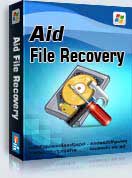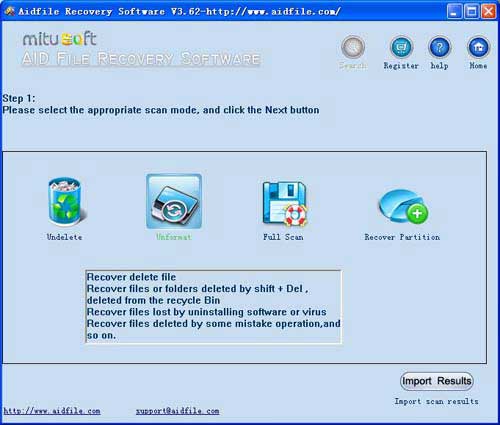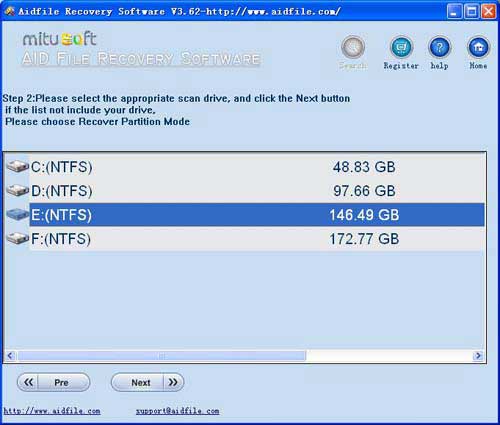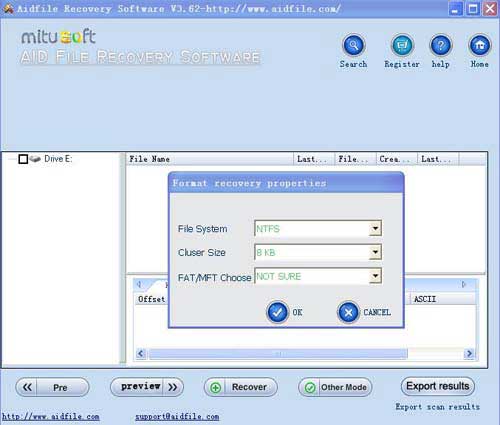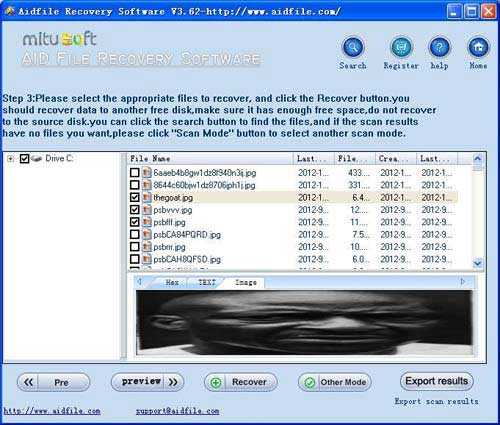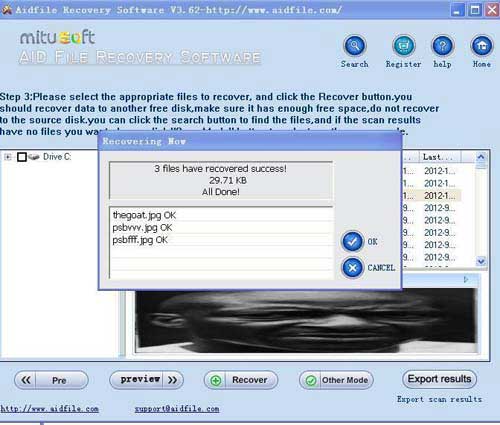Recover formatted photos digital camera, Recover photos from formatted digital camera sd card quick format,full format,accidentally formatted.
Use "Undelete" mode to recover deleted photos from formatted digital camera sd card.
Use "Unformat" mode to recover photos from formatted digital camera sd card after quick format,full format,accidentally formatted,reformatting,High-level formatting,Low-level formatting.
Use "Recover partition" mode to recover deleted photos from formatted digital camera sd card partitions changed or damaged or deleted .
Use "Full Scan" mode to recover photos from formatted digital camera sd card partitions show as "raw" or retrieve deleted photos which can not be found with "undelete" or "Unformat" or "Recover partition" ,recover photos from raw partition,recover photos of partitons which are not NTFS,nor exfat,nor fat32.
A digital camera or digicam is a camera that produces images that can be stored in digital memory, displayed on a screen and printed on physical media. Most cameras produced today are digital, and digital cameras are incorporated into many devices ranging from PDAs and mobile phones (called camera phones) to vehicles.
Many camera phones and most stand alone digital cameras store image data in flash memory cards or other removable media. Most stand-alone cameras use SD format, while a few use CompactFlash or other types. In January 2012, a faster XQD card format was announced. In early 2014, some high end cameras have two hot-swapable memory slots. Photographers can swap one of the memory card with camera-on. Each memory slot can accept either Compact Flash or SD Card. All new Sony cameras also have two memory slots, one for its Memory Stick and one for SD Card, but not hot-swapable. A few cameras used other removable storage such as Microdrives (very small hard disk drives), CD single (185 MB), and 3.5" floppy disks. Other unusual formats include:Onboard flash memory, PC Card hard drives ;
Many cameras, especially high-end ones, support a raw image format. A raw image is the unprocessed set of pixel data directly from the camera's sensor, often saved in a proprietary format. Adobe Systems has released the DNG format, a royalty-free raw image format used by at least 10 camera manufacturers. Raw files initially had to be processed in specialized image editing programs, but over time many mainstream editing programs, such as Google's Picasa, have added support for raw images. Rendering to standard images from raw sensor data allows more flexibility in making major adjustments without losing image quality or retaking the picture. Formats for movies are AVI, DV, MPEG, MOV (often containing motion JPEG), WMV, and ASF (basically the same as WMV). Recent formats include MP4, which is based on the QuickTime format and uses newer compression algorithms to allow longer recording times in the same space. Other formats that are used in cameras (but not for pictures) are the Design Rule for Camera Format (DCF), an ISO specification, used in almost all camera since 1998, which defines an internal file structure and naming. Also used is the Digital Print Order Format (DPOF), which dictates what order images are to be printed in and how many copies. The DCF 1998 defines a logical file system with 8.3 filenames and makes the usage of either FAT12, FAT16, FAT32 or exFAT mandatory for its physical layer in order to maximize platform interoperability
Reformatting an SD card with a different file system, or even with the same one, may make the card slower, or shorten its lifespan. Some cards use wear leveling, in which frequently modified blocks are mapped to different portions of memory at different times, and some wear-leveling algorithms are designed for the access patterns typical of exFat or FAT32. In addition, the preformatted file system may use a cluster size that matches the erase region of the physical memory on the card; reformatting may change the cluster size and make writes less efficient;
Formatting a disk for use by an operating system and its applications typically involves three different processes.High-level formatting is the process of setting up an empty file system on a disk partition or logical volume and, for PCs, installing a boot sector. This is a fast operation, and is sometimes referred to as quick formatting. Reformatting often carries the implication that the operating system and all other software will be reinstalled after the format is complete. Rather than fixing an installation suffering from malfunction or security compromise, it may be necessary to simply reformat everything and start from scratch. Various colloquialisms exist for this process, such as "wipe and reload", "nuke and pave", "reimage", etc. Sometimes, data present in the physical drives (Internal/External Hard disk, Pen Drive, etc.) gets lost, deleted and formatted due to circumstances like virus attack, accidental deletion or accidental use of SHIFT+DELETE. In these cases, data recovery software are used to recover/restore the data files. Logical recovery of files, partition, MBR and filesystem structures After the drive has been cloned to a new drive, it is suitable to attempt the retrieval of lost data. If the drive has failed logically, there are a number of reasons for that.Data damage can be caused when, for example, a file is written to a sector on the drive that has been damaged. This is the most common cause in a failing drive, meaning that data needs to be reconstructed to become readable. Corrupted documents can be recovered by several software methods or by manually reconstructing the document using a hex editor.
Aidfile Data Recovery Software Keyfeature
Photos (JPG, PNG, ICON, TIF, BMP, RAF, CR2, etc.), videos and audios (MPG, MP4, MP3, MTS, M2TS, 3GP, AVI, MOV, RM, RMVB, etc.).
Support Windows 10,XP,2003,2008,2012,7,8,Vista.
